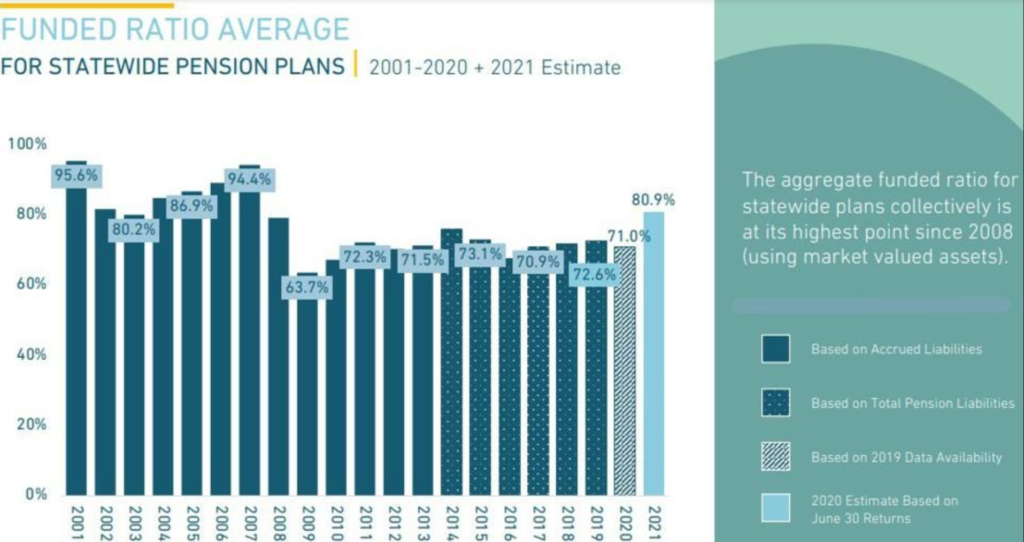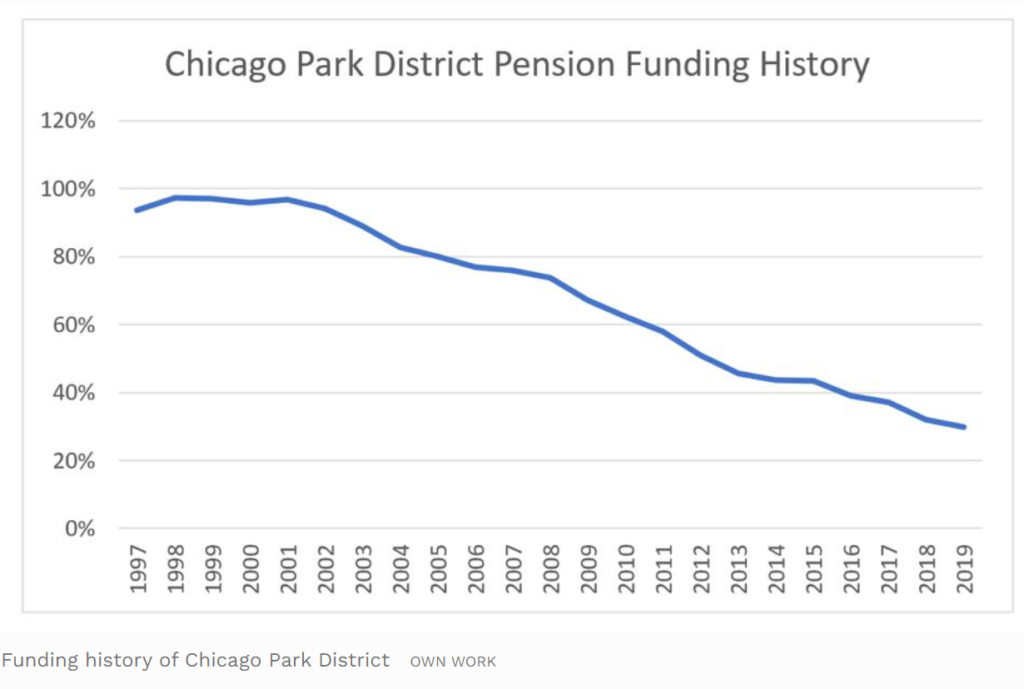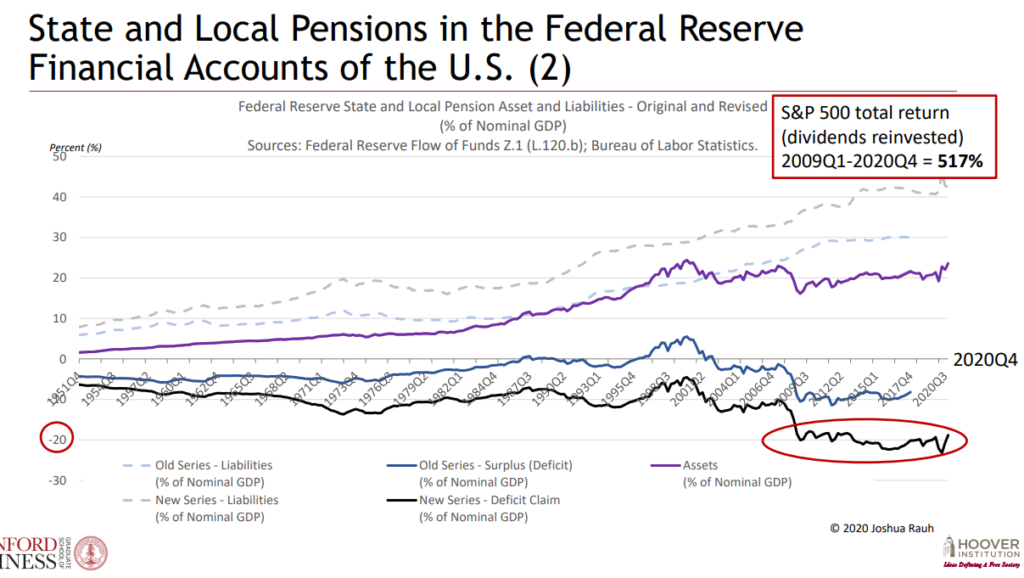Graphic:
Excerpt:
A new analysis shows the city of San Diego’s pension system is in strong financial shape compared to similar systems across the state and the nation.
While the city’s pension debt is nearly $3 billion, most pension systems face similar gaps between their investment assets and long-term projections of what they will owe employees when those employees eventually retire.
The comparative analysis, which was presented to the city’s pension board Friday, shows that San Diego has been in the top half of the nation’s largest 175 pension systems for “funded ratio” every year since 2013.
And the city’s ratio, which just climbed from 70.2 percent to 74.3 percent thanks to the robust stock market, has been in the top quarter of those national pension systems several times in recent years.
The city’s pension system, formally known as the San Diego City Employees Retirement System, also has among the most conservative policies regarding projections of long-term investment returns.
….
San Diego’s projected rate of long-term investment growth is 6.5 percent, which is at the very low end of the group of 175 pension systems.
Author(s): David Garrick
Publication Date: 16 Jan 2022
Publication Site: San Diego Tribune





